Faculty Research
The department's faculty investigate the deep past of Earth, climate change, ocean systems, global cycles, and natural hazards. Their research breaks new ground in material construction, ocean acidification, and supervolcanoes, and broadens our understanding of how Earth's oceans and terrestrial ecosystems are being changed by climate change and, in turn, are affecting the rate of change.
Beyond the teaching they do in the classroom, lab, and the field, EOS faculty also frequently hire student lab assistants, opportunities that can lead to independent studies or honors theses.
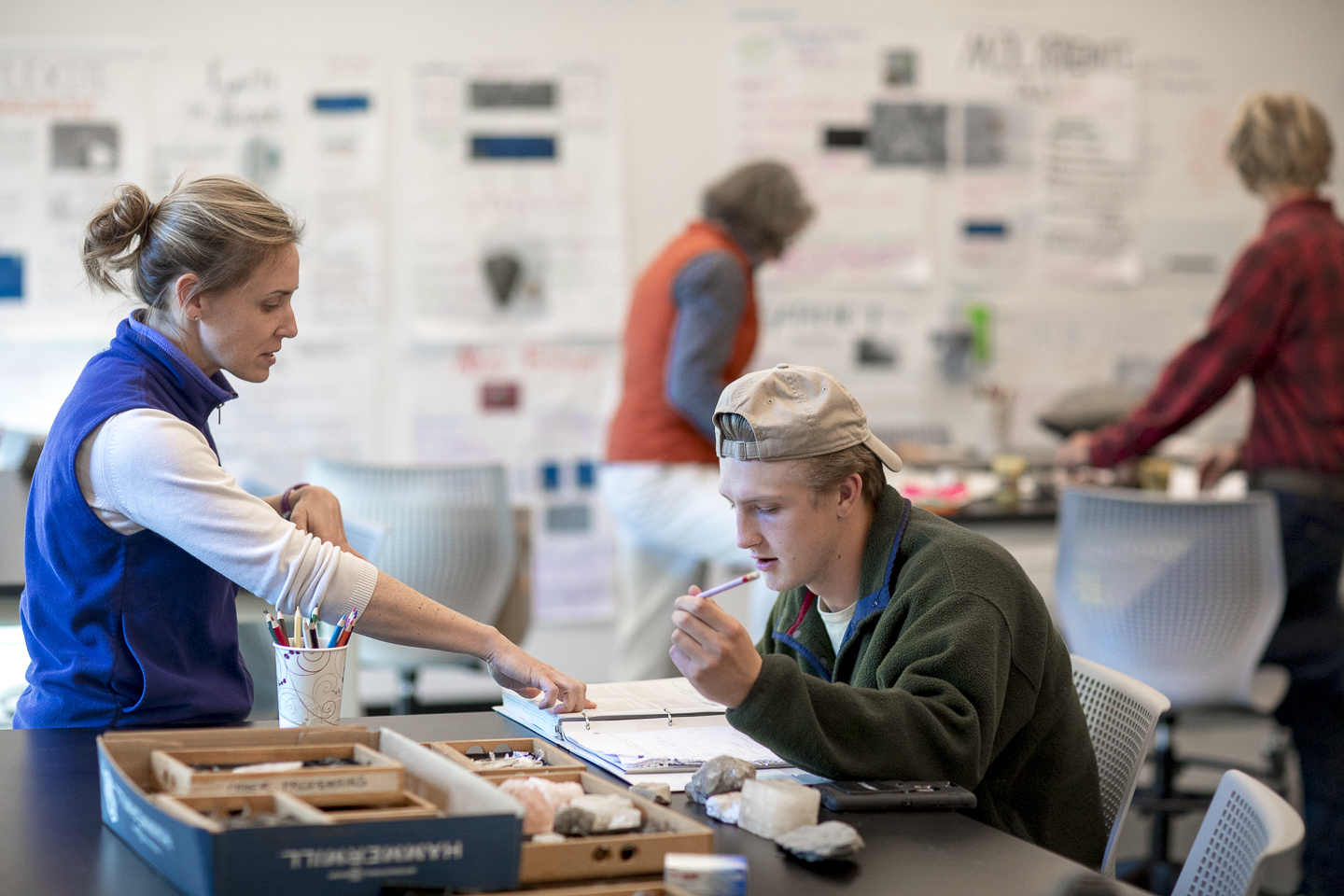
Emily Peterman
With collaborators at Bowdoin and beyond, Peterman uses a variety of methods to explore and quantify solid Earth processes. She is interested in how mountain belts evolve in time and space, and how the strength of the lithosphere evolves during mountain building processes. To answer these questions, she explores the deep roots of ancient mountain systems that are exposed at the surface today. Her research involves a combination of field-based research, petrographic microscopy, scanning electron microscopy (BSE, EBSD, CL, EDS), geochronology, and geochemical modeling. Example projects include metamorphism and deformation in Maine, atomic scale geochronology and geochemistry, and ultrahigh-pressure terranes in Greece.
Student Story
- Looking for Tiny Minerals in Greece to Explain how Earth Functions
- What We Are Studying Now: Investigating Zircon’s Preservation of Ultrahigh-Pressure Metamorphism

Rachel Beane
Rachel Beane is a geologist who interprets processes that have shaped the earth. She has conducted mineral, volcanic, and tectonic research in New Zealand, Russia, Kazakhstan, Greece, western US, and Maine, with grant funding from the National Science Foundation (NSF) and Bowdoin. To interpret solid earth processes, Beane’s lab often uses a combination of methods including field-based research, light microscopy, and scanning electron microscopy (EBSD, CL, EDS, and BSE).
Her current projects include interpretation of metamorphism and mineral deformation in Maine and volcanic-plutonic processes in New Zealand. In addition to these mineral- and rock-based research projects, she also conducts research related to faculty development, science learning, and diversity, equity, and inclusion practices in the geosciences. This research typically involves literature reviews and statistical analyses. She welcomes collaborations with Bowdoin students.
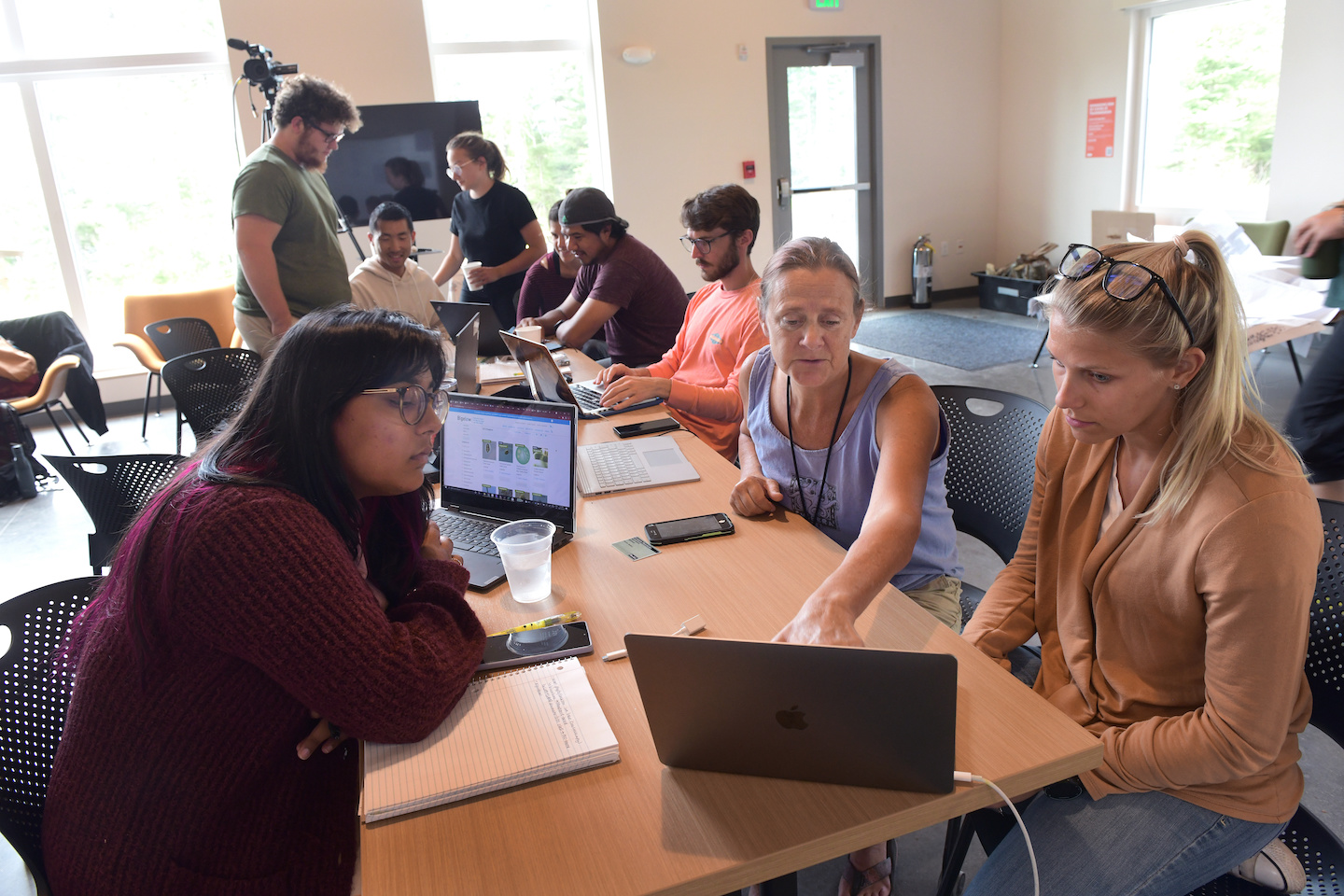
Collin Roesler
Collin Roesler's research centers on factors that drive primary production in the ocean, a process that forms the base of the marine food web and generates most of the world’s oxygen. Primary production is largely fueled by phytoplankton, which are critically important microscopic single-celled organisms with rapid growth rates.
Roesler has developed a suite of tools to study phytoplankton on scales relevant to their small size and short life cycles. With these system of sensors, she investigates phytoplankton dynamics on daily and tidal cycles, throughout the seasons and over decades, observing their responses to environmental changes and recordings changes in the diverse composition of phytoplankton species. Her work has taken her around the globe and to all the major oceans.
Because phytoplankton are photosynthetic—acting like a vibrant unseen garden at the surface of the ocean—they absorb some of the excess CO2 humans contribute to the atmosphere. So, while Roesler’s research focuses on tiny organisms, her work is helping us better understand global ocean productivity and the ocean's role in balancing the earth’s carbon cycle.
Some of the sensors Roesler uses to do her research are attached to moorings in the Gulf of Maine and in nearby Harpswell Sound. They provide ground truth for satellite-based ocean observations. Students in her classes, and those who pursue independent projects, can mine the data of the moorings and/or NASA satellite's long-term data sets to explore a wide range of research questions.
Student Story
Published Examples of Student Work
- Payne, C. and C. Roesler. 2019. Characterizing the influence of Atlantic water intrusion on water mass formation and phytoplankton distribution in Kongsfjorden, Svalbard. Continental Shelf Research 191: 104005. doi:10.1016/j.csr.2019.104005.
- Carberry, L., Roesler, C. and Drapeau, S. 2019. Correcting in situ chlorophyll fluorescence time‐series observations for nonphotochemical quenching and tidal variability reveals nonconservative phytoplankton variability in coastal waters. Limnology & Oceanography Methods 17: 462-473. doi:10.1002/lom3.10325.
- Kramer, S., C. Roesler, and H. Sosik. 2018. Bio-optical discrimination of diatoms from other phytoplankton in the surface ocean: Evaluation and refinement of a model for the Northwest Atlantic. Remote Sensing Environment 217: 126-143, doi: 0.1016/j.rse.2018.08.010.
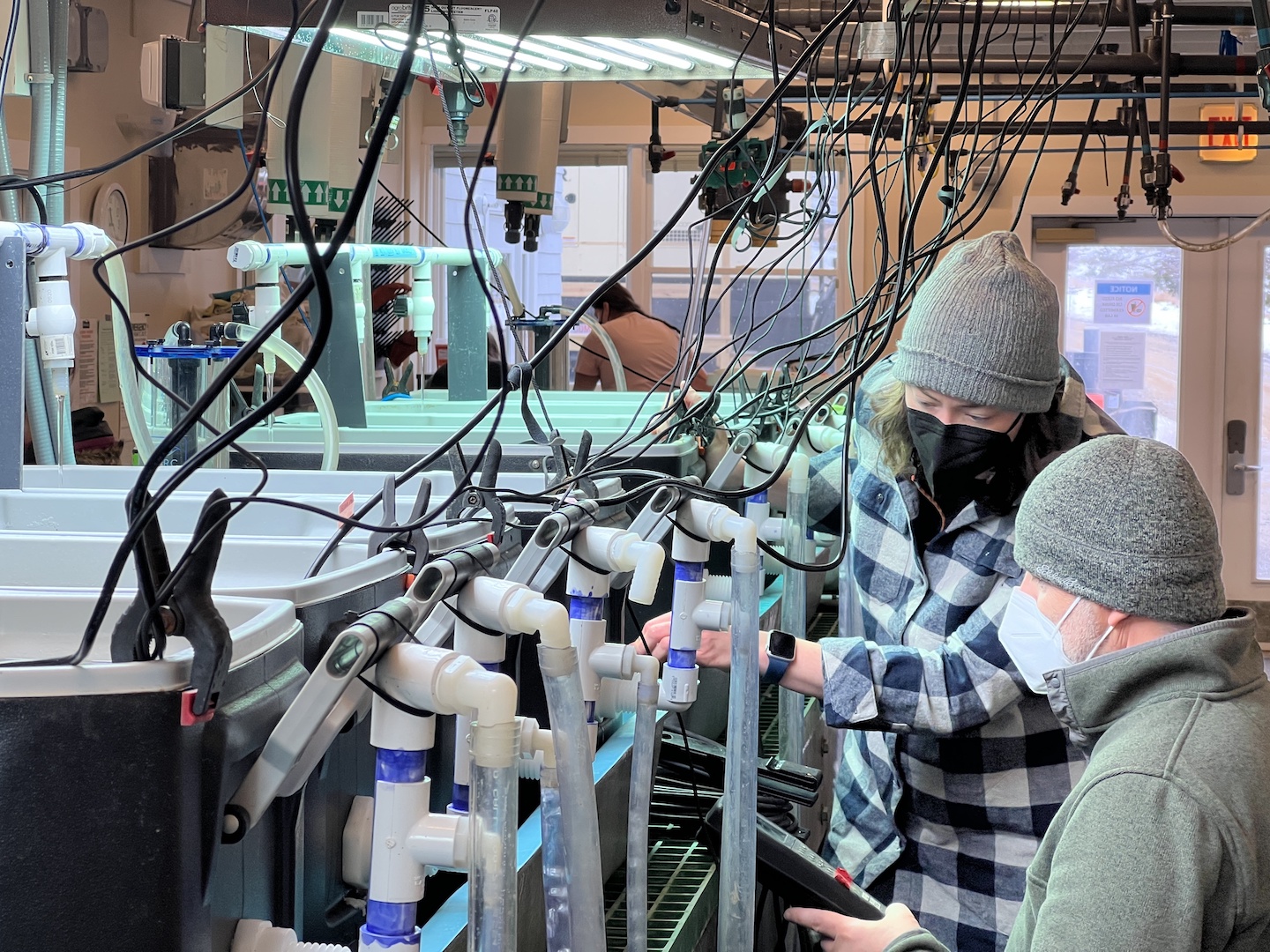
Michèle LaVigne
Michèle LaVigne's lab researches marine biogeochemistry and paleoceanography across ocean regions and timescales. With students and other collaborators, she studies how global climate change has affected the biogeochemical cycling of ocean nutrients and carbon over the past several centuries—and how global warming will impact ocean acidification and marine biological response in the future.
Her local projects include evaluating the effects of ocean acidification in the Gulf of Maine. The growing concentration of atmospheric CO2 in the seawater is simultaneously lowering the water's pH and increasing the solubility of calcium carbonate minerals. She partners with biologists, ecologists, oceanographers, and geochemists to investigate the natural chemical variability of intertidal ecosystems and the effects on the geochemistry and mineralogy of calcifiers, like clams and lobsters. This involves field work, coastal water quality monitoring, geochemical analyses, and culturing of organisms.
She also uses geochemical “fingerprints” naturally recorded in coral skeletons as proxies for constructing records of past ocean nutrients. Biogeochemical cycles play a key role in connecting interannual to decadal climate change, circulation, biological productivity, and carbon uptake from the atmosphere. The power of corals to act as continuous recorders of their biogeochemical environment allows her to study remote areas of the ocean where instrumental data have been sparse until recent years, such as in the equatorial Pacific and the deep sea.
Additionally, LaVigne is interested in science communication and sharing her scientific knowledge with policymakers.
She welcomes collaborations with students who have taken (or are currently enrolled in) Biogeochemistry.
Student Stories- Investigating the Ocean's Past for Insights into Climate Change's Future
- Pioneering Deep Sea Research by Serrato Marks '15 Published in Academic Journal
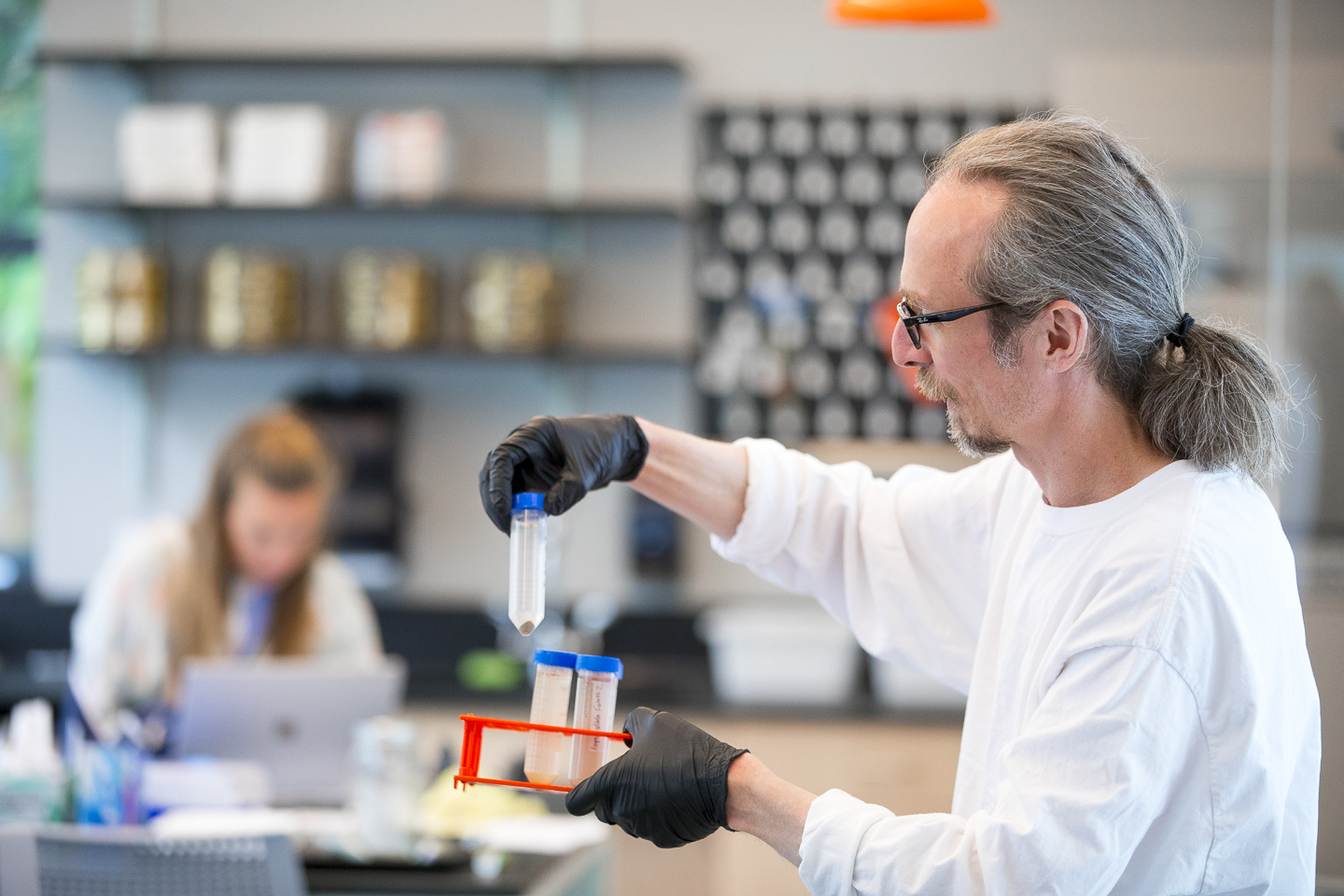
Phil Camill
The main driver behind Phil Camill’s research is his quest to understand how changing climate impacts Earth's natural systems, both in the modern world and over the geological past. His research encompasses all the “spheres”—the biosphere, atmosphere, hydrosphere, cryosphere, and lithosphere—to grasp how landscapes are responding to warming and, as they change, how they are contributing to or slowing down climate change. For the past thirty years, he has focused on investigating the vast northern ecosystems in boreal and arctic regions, where carbon dynamics and vegetation patterns are changing dramatically.
Phil encourages students who are interested in his work to email, stop by his office in Roux 128, or, most helpfully, to take his classes, especially Biogeochemistry: An Analysis of Global Change.
Student Story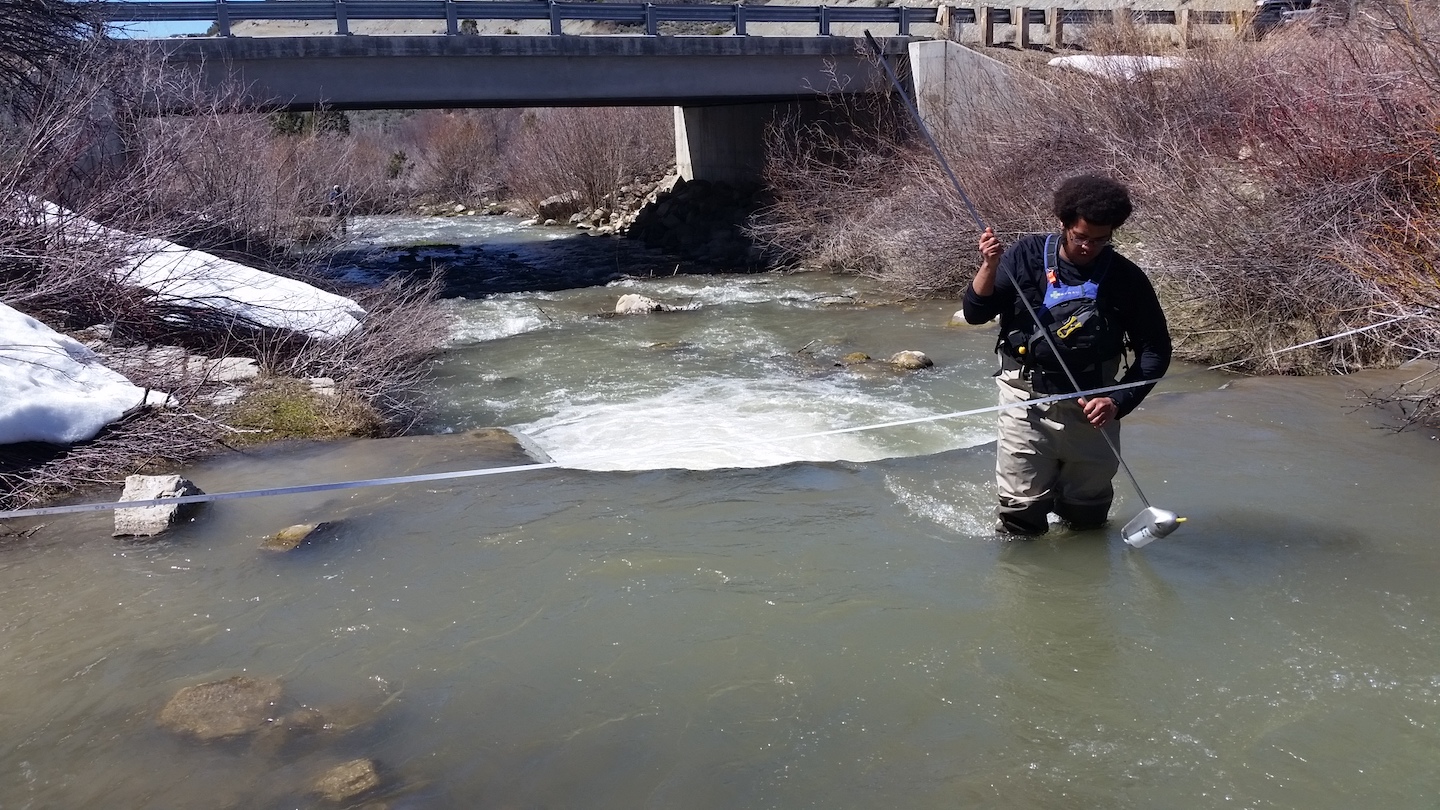
Jabari Jones
Jabari Jones is interested in how rivers change over time, with a particular emphasis on how human actions affect rivers. Humans are very effective geologic agents, and both direct (e.g., dam building) and indirect (e.g., climate change) human actions modify the shape and function of rivers. In turn, geologic processes like flooding and access to environmental amenities affect human communities, often in unequal ways. Jones uses a combination of publicly available data, remote sensing, statistical analysis, and field work to address questions about river change and environmental justice.
Jones has interests beyond river change, including community science – where people outside of traditional scientific institutions (government, universities) are empowered to ask scientific questions, diversity, equity, and inclusion within the geosciences, and geoscience education. Jones is new to Bowdoin in Fall 2023 and is looking forward to working collaboratively with students.